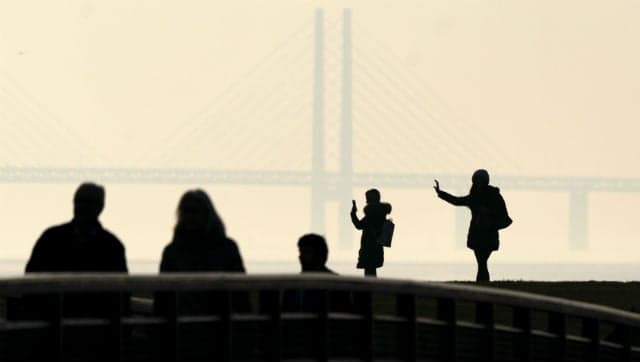This is how many people now live in the Öresund region

The population of the Öresund Region has grown by 300,000 people over the last decade, taking its total population to more than four million, according to new figures presented at the Business Arena conference in Malmö.
But while the region's total population exceeds that of Berlin, Paris or Madrid, economic growth still lags behind the most dynamic European regions, according to the Öresund Institute, which prepared the report.
"I think we have good momentum, but we also have a problem, both in Malmö and Copenhagen, which is that the economic growth in both cities is still lagging behind cities like Stockholm, Amsterdam and Hamburg," Johan Wessman, the Institute's chief executive, told The Local.
The Öresund Region, sometimes marketed as Greater Copenhagen, groups the Danish cities of Copenhagen, Odense and Roskilde together with Malmö, Lund, and Helsingborg in Sweden, and their surrounding regions.
By marketing the area as a single business region, and encouraging cross-border activity, local municipal and regional governments hope to draw investment to the area.
READ ALSO:
-
Öresund commuters protected from no-deal Brexit
-
IN PICTURES: 14 photos that show Copenhagen and Malmö in a new light
-
Work permit rules complicate cross-border commuting for non-EU citizens
According to the figures, which were first released at the end of January, the region's population grew by 0.8 percent in 2018, with Denmark's Christiansø seeing the fastest growth, expanding by 8.4 percent.
Swedish commuter towns of Svedala, Staffanstorp and Lomma grew by 2.4 percent, 2.3 percent and 2.1 percent respectively, and Solrød and Vallensbæk in Denmark by 2.4 and 2.3 percent.
Malmö grew by 1.7 percent, Copenhagen by 1.6 percent, Lund by 1.4 percent, and Helsingborg by 1.5 percent.
Wessman said that the population on the Swedish side of the Öresund Strait had been growing faster in recent years as a result of the 2015 refugee wave, which was continuing to push population growth as refugees settled elsewhere in Sweden move to join family and friends in Malmö.
"We have seen migration from other countries, mostly in the Swedish part of the Öresund region, which has had a rather heavy impact over the last couple of years," he said.
But he said the region was also growing faster because of its young population and the cities' positive reputation both internationally and locally.
"We have a reputation for interesting cities with good liveability," he said. "And when you have a young population, you have more children and higher birth rates."
Comments
See Also
But while the region's total population exceeds that of Berlin, Paris or Madrid, economic growth still lags behind the most dynamic European regions, according to the Öresund Institute, which prepared the report.
"I think we have good momentum, but we also have a problem, both in Malmö and Copenhagen, which is that the economic growth in both cities is still lagging behind cities like Stockholm, Amsterdam and Hamburg," Johan Wessman, the Institute's chief executive, told The Local.
The Öresund Region, sometimes marketed as Greater Copenhagen, groups the Danish cities of Copenhagen, Odense and Roskilde together with Malmö, Lund, and Helsingborg in Sweden, and their surrounding regions.
By marketing the area as a single business region, and encouraging cross-border activity, local municipal and regional governments hope to draw investment to the area.
READ ALSO:
- Öresund commuters protected from no-deal Brexit
- IN PICTURES: 14 photos that show Copenhagen and Malmö in a new light
- Work permit rules complicate cross-border commuting for non-EU citizens
According to the figures, which were first released at the end of January, the region's population grew by 0.8 percent in 2018, with Denmark's Christiansø seeing the fastest growth, expanding by 8.4 percent.
Swedish commuter towns of Svedala, Staffanstorp and Lomma grew by 2.4 percent, 2.3 percent and 2.1 percent respectively, and Solrød and Vallensbæk in Denmark by 2.4 and 2.3 percent.
Malmö grew by 1.7 percent, Copenhagen by 1.6 percent, Lund by 1.4 percent, and Helsingborg by 1.5 percent.
Wessman said that the population on the Swedish side of the Öresund Strait had been growing faster in recent years as a result of the 2015 refugee wave, which was continuing to push population growth as refugees settled elsewhere in Sweden move to join family and friends in Malmö.
"We have seen migration from other countries, mostly in the Swedish part of the Öresund region, which has had a rather heavy impact over the last couple of years," he said.
But he said the region was also growing faster because of its young population and the cities' positive reputation both internationally and locally.
"We have a reputation for interesting cities with good liveability," he said. "And when you have a young population, you have more children and higher birth rates."
Join the conversation in our comments section below. Share your own views and experience and if you have a question or suggestion for our journalists then email us at [email protected].
Please keep comments civil, constructive and on topic – and make sure to read our terms of use before getting involved.
Please log in here to leave a comment.